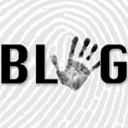 June saw the beginning of a series of hearings at the Grenfell Tower Inquiry involving expert witness presentations. The list of expert witnesses appointed by Sir Martin Moore-Bick’s inquiry is long and features academics and practising engineers in a number of engineering disciplines, architectural experts, fire officers and, chillingly, an expert in human identification, among others.
June saw the beginning of a series of hearings at the Grenfell Tower Inquiry involving expert witness presentations. The list of expert witnesses appointed by Sir Martin Moore-Bick’s inquiry is long and features academics and practising engineers in a number of engineering disciplines, architectural experts, fire officers and, chillingly, an expert in human identification, among others.
Grenfell has already led to the conclusion of one inquiry: the Review of Building Regulations by Dame Judith Hackitt. The conclusions of that review were quickly endorsed by LABC, the body representing local authority building controllers.
Grenfell is at the extreme of hearings involving buildings. Most building disputes centre on money and time taken. They range from a claim for defective workmanship made by a householder to contractual wrangles involving developers, main contractors, architects and, of course, clients.
Accordingly, the extent of expert involvement can range from a simple report by a structural engineer to a full-on battle between two armies of experts. Attempts to take some of the court time (and consequently money) out of such disputes by alternative dispute resolution have had some success, but the tendency to rush to litigate remains.
The Technology and Construction Court is located in the Rolls Building, opened in 2011. It was among the first of a series of new and modern court buildings. The main thrust of HM Courts and Tribunal Service’s modernisation programme, however, is to introduce new technology into the working of the justice system – services such as online divorce petitions and probate.
Progress made so far was the subject of a report by the National Audit Office, which gave HMCTS two cheers for its efforts. It is, the NAO concedes, a monumental task and there is likely to be slippage in the timing and a budgetary shortfall. A spokeswoman for the MoJ diplomatically dwelt on the positive aspects of the report.
In his Sir Henry Brooke Annual Lecture, Lord Burnett was enthusiastic about the modernisation process. He trod on the toes of court interpreters, however, when he predicted that machines would soon replace them. The Institute of Translation and Interpreting admonished him in an open letter.
New technologies are finding their way into most areas of litigation these days. Perhaps they are at their most exciting and science fiction-like in the area of forensic investigation. We have reported recently on such miraculous feats as recreating a car journey using the analysis of brake lights and satellite imagery, and the use of drones to identify a suspect from their height.
Road traffic accident investigation is an arena where new technology is becoming widespread. The tape measure and skid mark analysis are being superseded by analysis of vehicles’ on-board computers. Modern incentives by insurance companies to have devices installed to analyse driving behaviour have added to the data available.
The most ubiquitous use of technology in the detection of crime continues to be the CCTV camera. They are to be found everywhere in our towns and cities. Many find them intrusive, but this writer for one always seeks out a parking space in view of a camera where possible. But there are rules and protocols to be followed when installing and operating them. The Surveillance Camera Commissioner has issued a buyer’s guide for SMEs thinking of installing them.
In 2014 we published our first overview of legacies in wills, expecting it to be a one-off feature. Three-and-a-half years later the now-regular series of articles and reports has taken on an identity of its own and become a supplement to Your Expert Witness. The plan is for it to continue that way.


